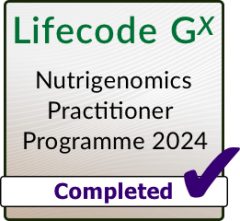Reference Number: 538
Year: 2021
Link: Link to original paper
Health: Cardiometabolic diseases | Heart Disease | Lower Inflammation | Metabolic syndrome | Non-communicable diseases
Nutrition: Fibre | Whole grain
Summary
Background
International dietary guidelines aim to reduce risks of all-cause mortality, cardiovascular disease (CVD), and fatal CVD often associated with poor dietary habits. However, most studies have examined associations with individual nutrients, foods, or dietary patterns, as opposed to quantifying the pooled health effects of adherence to international dietary recommendations. We investigated associations between total adherence to the World Health Organization (WHO) dietary recommendations for saturated fats, free sugars, fibre, and fruits and vegetables and all-cause mortality and fatal and non-fatal CVD.
Methods
We included participants from the UK Biobank cohort recruited in 2006–2010, which provided at least two valid 24-h dietary assessments. We defined adherence to dietary recommendations as ? 10% saturated fats, ? 10% free sugars, ? 25?g/day fibre, and ? 5 servings of fruits and vegetables/day. Multivariable Cox-proportional hazards models were used to investigate prospective associations with all-cause mortality and fatal and non-fatal CVD. In cross-sectional analyses, multivariable linear regression was used to examine associations with cardiometabolic risk factors.
Results
Among 115,051 participants (39–72 years), only 29.7%, 38.5%, 22.3%, and 9.5% met 0, 1, 2, or 3–4 recommendations, respectively. There was a lower risk of all-cause mortality among participants meeting more dietary recommendations (Ptrend <?0.001), with a significantly lower risk among participants meeting 2: HR 0.91 (95% confidence interval [CI] 0.85–0.97) and 3–4: HR 0.79 (95% CI 0.71–0.88) recommendations. There was no trend with CVD risk, but a significantly lower risk of fatal CVD with 3–4 recommendations: HR 0.78 (95% CI 0.61–0.98). Meeting more recommendations resulted in significant cross-sectional trends (Ptrend <?0.001) towards lower body fat, waist circumference, LDL cholesterol, apolipoprotein B, triglycerides, alkaline phosphatase, gamma glutammyltransferase, and hs-CRP, but higher glucose and aspartate aminotransferase.
Conclusions
Meeting dietary recommendations is associated with additive reductions in premature mortality. Motivating and supporting people to adhere to dietary guidelines may help extend years of healthy life expectancy.
What is the significance of this study to the baker:
This study shows that by reducing sugar intake and consuming adequate fibre, along with the government guidelines we gain a lower risk of fatal CVD. The more recommendations we make, for example, at least 5 portions of vegetables/fruit a day, we can help lower the risk of metabolic syndrome.
This is in line with our 7 core principles here at The Sourdough School. If we increase intake of quality wholegrains, and ensure our sourdough bakes are combined with healthy fats and a diverse range of fruits and vegetables we naturally increase our fibre intake. For example, you may like to try these recipes with your sourdough bread: cultured anchovy butter and cauliflower & chickpea soup.
In turn, we feed the beneficial gut microbes and control blood sugar levels, pushing away any cravings for refined sugar or any other processed foods and extend our health span.

